Sugar PinePinus lambertianaHeight: 100' average mature height Hardiness Zones: 7-8 Find my zone Aspect: half shade to full sun
This plant can't be shipped to California, Hawaii, Montana
Size Availability
Out of season.
Our main crop of most plants is available starting in late fall.
Additional batches of plugs and quarts are usually added in May.
Many of our plants are propagated in limited quantities and can sell out quickly when posted, get on the notification list below so you don't miss out. Add your email to be notified as soon as we have them back in stock:
This does NOT subscribe your email to any mailing lists, our system will only send an inventory notification message.
The sugar pine is one of our personal favorite pine species because of its beautiful soft foliage and even growth. Mature trees are decorated with massive pine cones that hang from slightly weeping branches and drop large, edible seeds. Because of the open and drooping branching pattern, Sugar Pines are easy to spot growing on hot and dry hillsides in their native range.
In the landscape, Sugar Pines are very useful because of their drought and heat tolerance as well as slower growth compared to other pine species, which can quickly overshadow all the other plants in your landscape. Even though their eventual size is massive, they are well suited to smaller landscapes and are one of the most popular bonsai trees. Most trees will grow about six inches to one foot per year in height and take well to shaping and pruning in any style garden.
Sugar Pines are members of the White Pine group, which all have needles in groups of five.
Coming Across Massive Sugar Pines in the Wild
After backpacking for several days in the upper drainage of the Applegate, numerous massive Sugar Pine trees started appearing alongside the (almost non-existent) trail that towered over even the largest trees of other species in the forest. This fact was made even more impressive by the fact that the average tree throughout this forest seemed to be at least 100 feet tall - seeing Douglas-fir with diameters of 5-6 feet was actually quite common. But some of these sugar pines seemed to match the size of many large specimens of Coastal Redwood common throughout the coast of Northern California, the tallest of which are famous for being the tallest trees in the world.
These sugar pines must have been larger than at least half of the Coast Redwoods I had ever seen, and the lowest branches of these behemoths didn't start until well above the forest of Chinquapin some 40 feet above the forest floor. Piles of composted pine needles that surrounded the tree appeared to be up to three feet deep, the result of hundreds and perhaps thousands of years of needle drop. The trees truly seemed ancient, slowly growing and persisting through countless floods, droughts, and landslides. Hiking through these valleys for several days, a pattern seemed to appear in where these massive trees would grow. They were always in flat plateaus near the bottom of individual valleys but up against steep hills or cliffs. The steep terrain of the area protected these trees from logging, and the ample snow runoff during the summer months protected them from the severe wildfires common here during drought years.
For the fifteen or so giant Sugar Pine trees that can be found along the trail, these conditions must aligned perfectly to allow the trees to thrive and make a beautiful forest far more so. And after seeing specimens far more impressive than could be put into words, I ordered hundreds of seedlings to grow on and share with others, as well as plant around the nursery.
 Sugar pine cones developing in mid-summer.
Source: Wikipedia.
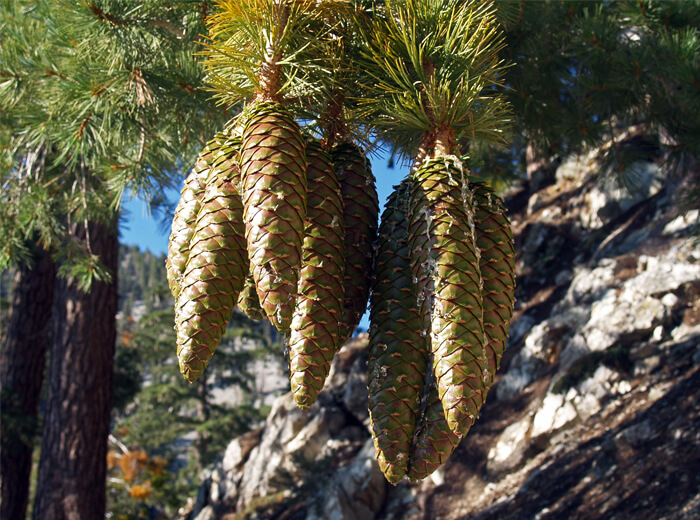 Sugar pine cones developing in mid-summer.
Source: Wikipedia.
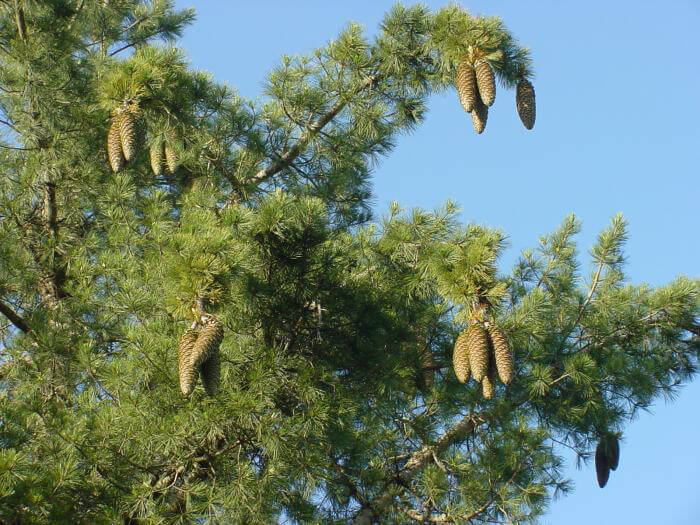 Sugar pine cones growing on a tree.
Source: Wikipedia.
 Sugar Pine trees produce the world's largest pine cone!
Source: Wikipedia.
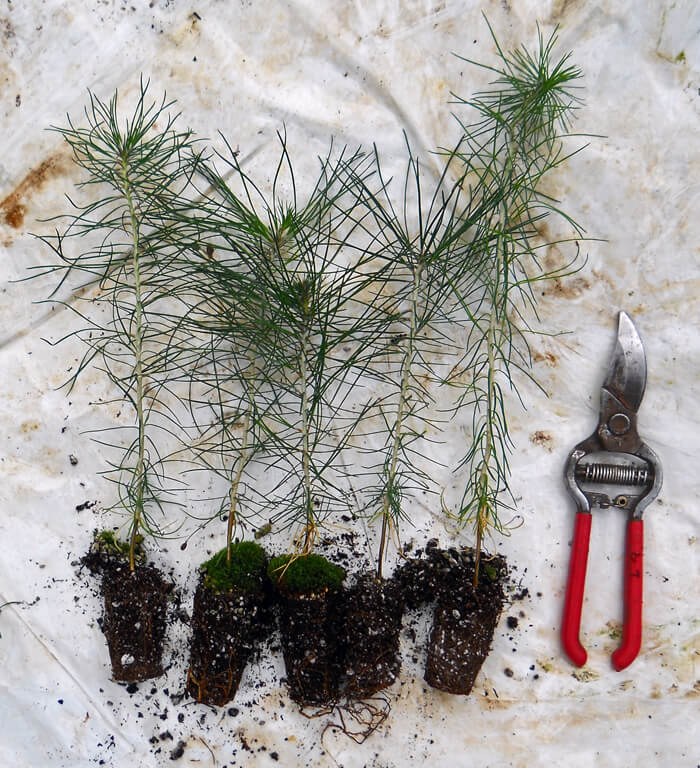 Typical pine seedling for 72 cell plug size (fall 2019 crop)  Potted Sugar Pine seedling. Packing Plants For ShippingMost of our plants are shipped bare root while they are dormant from late November through April and ship via the U.S. Postal Service. Bamboo plants can be shipped in their containers year-round by UPS.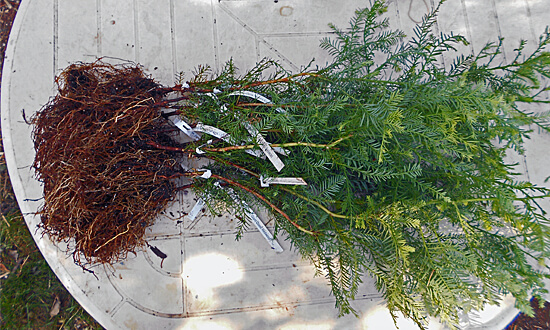 Bare root plants are soaked and wrapped together in bundles. ictured are 10x 24 inch tall Coast Redwoods. 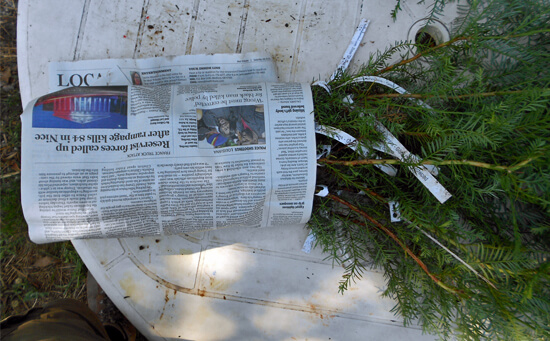 The bundled plants are wrapped in paper and labeled by variety. 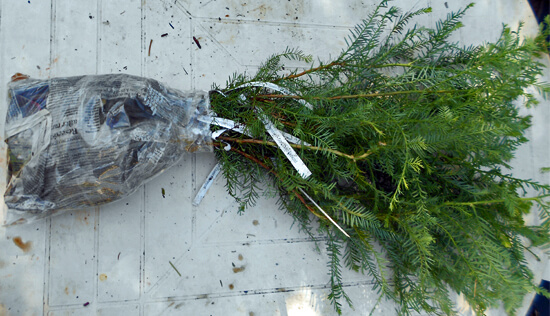 The bundle is wetted and bagged. 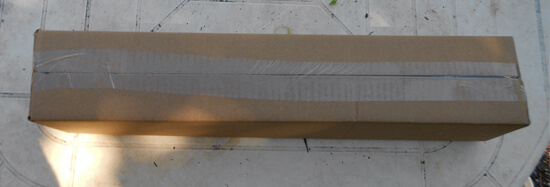 Bundles of plants are secured in long boxes. Pruning and Plant SizesWe prune both the tops and the roots of our plants at least once per year while they are growing in our nursery to ensure they develop a strong, dense form. Regular annual pruning goes a long way to ensure a healthy branching structure and this is often a missed step in many nurseries. Pruning a plant back hard after it has been neglected pruning-wise often results in an irregular branch habit or multiple leaders so we prune early and regularly instead. We also prune the roots of our plants while they are dormant which causes them to produce a much more branched structure and helps to elimate tangled masses that hinder future development. Plants that have been root pruned establish themselves much more quickly than root bound plants. Generally, hardwood plants will be pruned in the winter and conifers will be pruned in the summer.Before shipping plants we prune the tops and roots one last time. Conifers will usually have very little pruning except to balance out long branches. Shrubs are usually pruned to around 1-2 feet tall to encourage low branch development and small to medium sized trees are usually pruned to around 36-40 inches. Pruning trees at this height encourages dominant branches to begin forming around 3 feet from the ground which typically looks the best in most situations. However, if you want a tree to have branching start higher (some city codes require trees to not branch below 4 feet) we have longer boxes available. To request taller trees please contact us at least three days before your ship date. Depending on your location and the shipping routes there may be a fee for oversize package handling (usually about $15 for a 60 inch box). 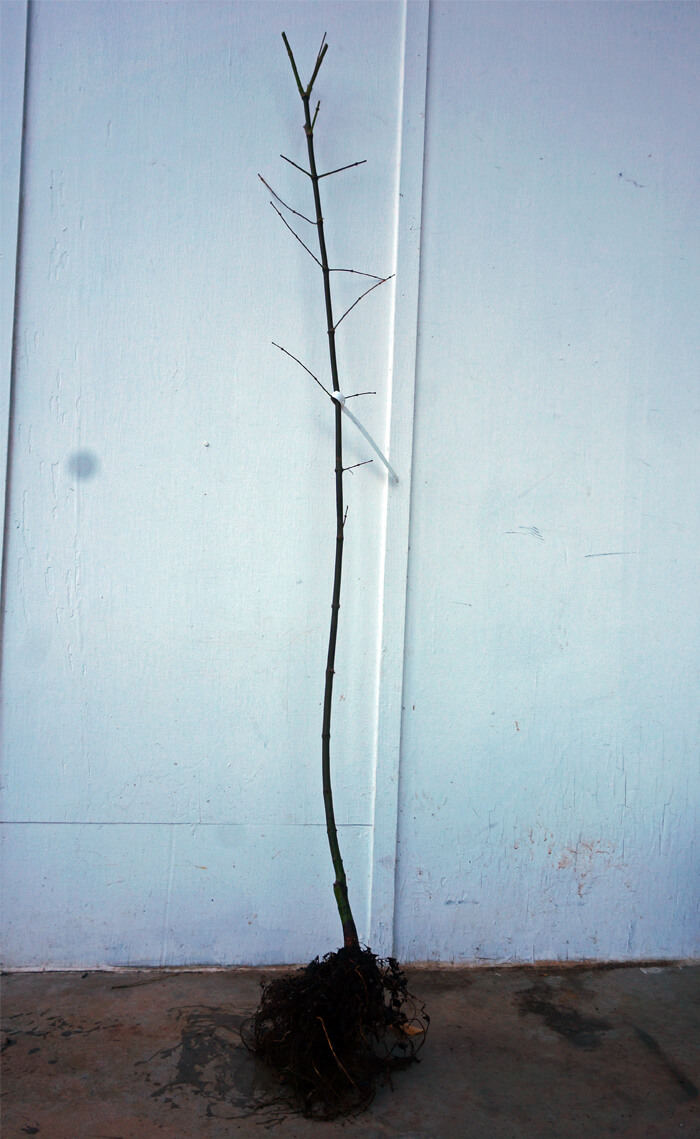 Tall trees (Oaks, Ginkgo, large Maples, etc.) are pruned to 40 inches to encourage crown development from about 36 inches and up 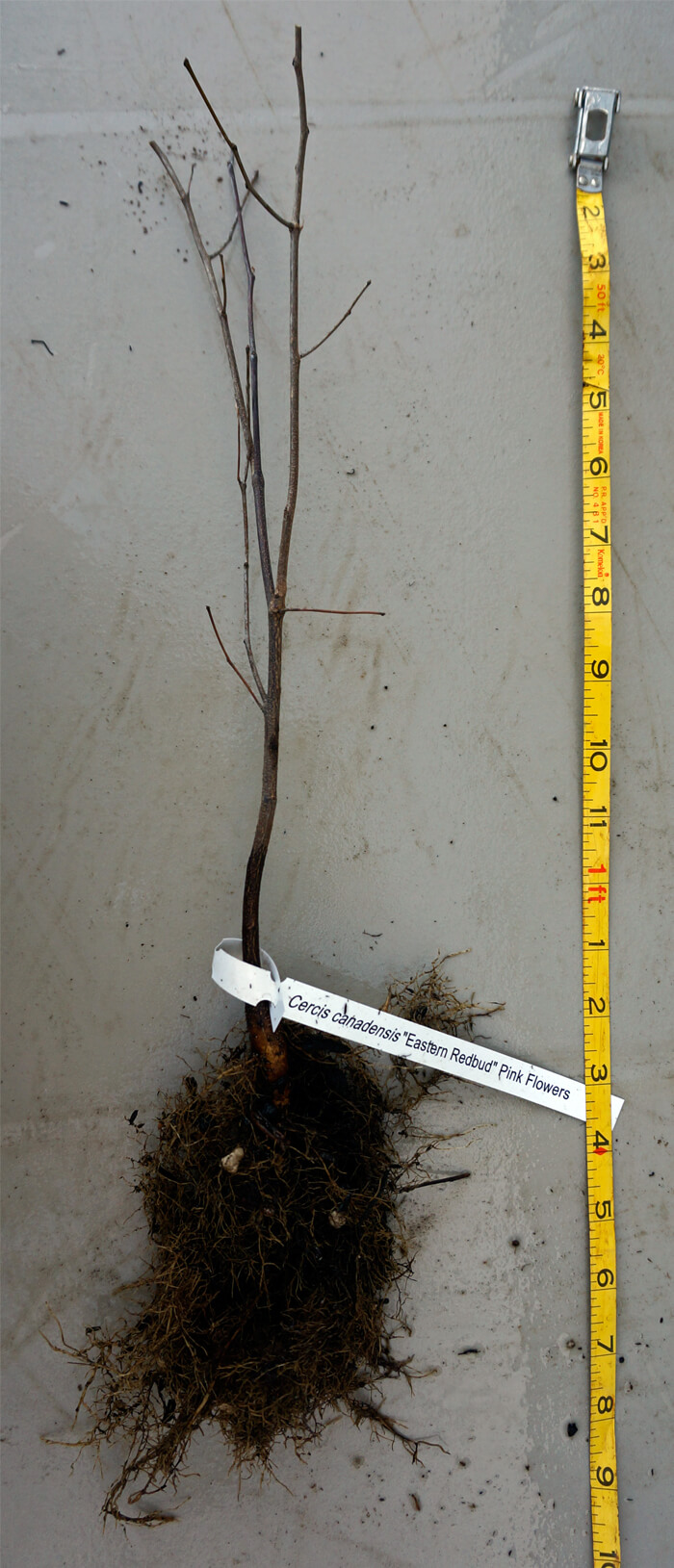 Small and medium trees (short Maples, Redbuds, Stewartia, etc.) are pruned 10-20 inches above the prune line from last year 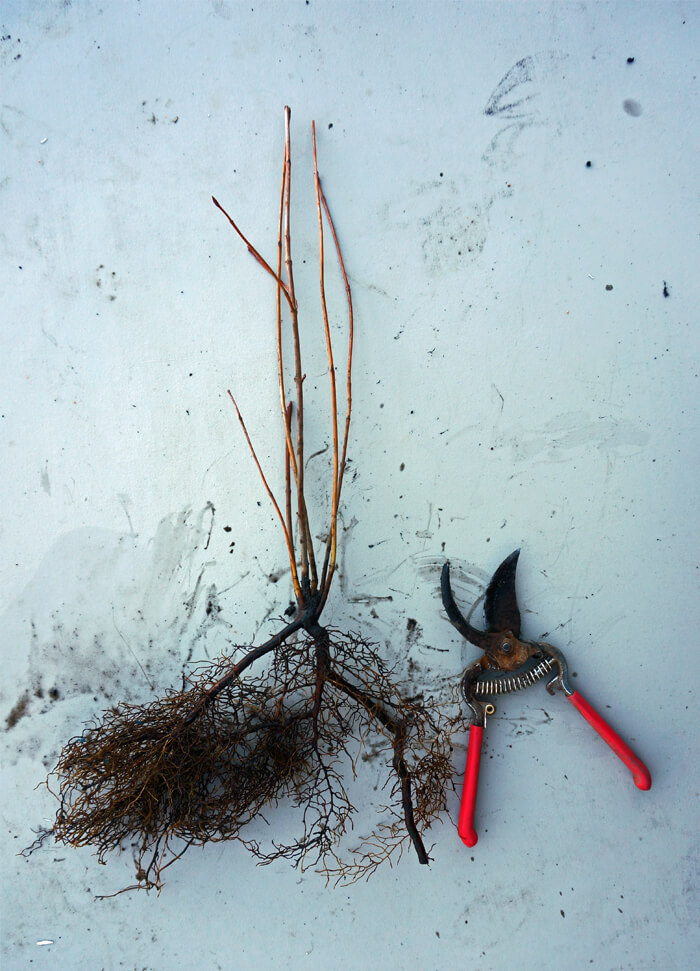 Shrubs (Weigela, Hydrangea, Viburnum, etc.) are pruned to 18 inches tall and root pruned one last time  Small plug size Bamboo Plants Are Shipped In Their ContainersBamboo roots are not flexible and so plants have to be shipped in their containers. These plants are heavier and are shipped separately from bare root plants. Because they are potted they can handle longer transit times so can ship via UPS Ground instead of USPS Air Mail. Potted plants can also be shipped year-round.We regularly top our 1 gallon bamboo plants at 24-30 inches tall throughout the growing season. This results in dense, bushy foliage while allowing for economical shipping. From this size most running species will grow to 5-6 feet tall in the first spring and clumping species will usually grow to 4-5 feet tall. 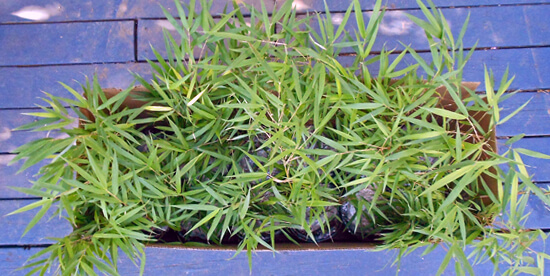 1 gallon bamboo plants strapped in and ready to be sealed. Unpacking Bare Root PlantsYou will be sent tracking details as soon as your plants are shipped. Unpack your plants as quickly as possible after they are delivered. We use two types of boxes, side-sealing and top-sealing. For boxes that are taped along the whole length you can cut the tape on either side and remove the plant bundles by cutting the tape holding the bundle to the bottom. For boxes that are sealed on the top and bottom, it is easiet to open the bottom of the box (the shipping label is at the top) and pull the bundle of plants out straight out. Check that the box is empty as there can be a second bundle of plants stuck towards the top.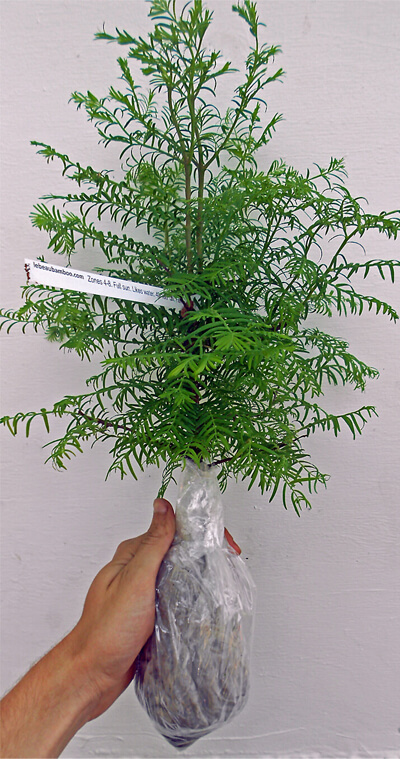 A bundle of trees. What if I am not able to plant right away?You can usually leave the plants in their shipping container unopened for 1-2 days if there were no shipping delays and you have received your plants from late November through February. Plants shipped when it is warmer can't stay in their packages for as long. |
Size Availability
Out of season.
Our main crop of most plants is available starting in late fall.
Additional batches of plugs and quarts are usually added in May.
Many of our plants are propagated in limited quantities and can sell out quickly when posted, get on the notification list below so you don't miss out. Add your email to be notified as soon as we have them back in stock:
This does NOT subscribe your email to any mailing lists, our system will only send an inventory notification message.
|

